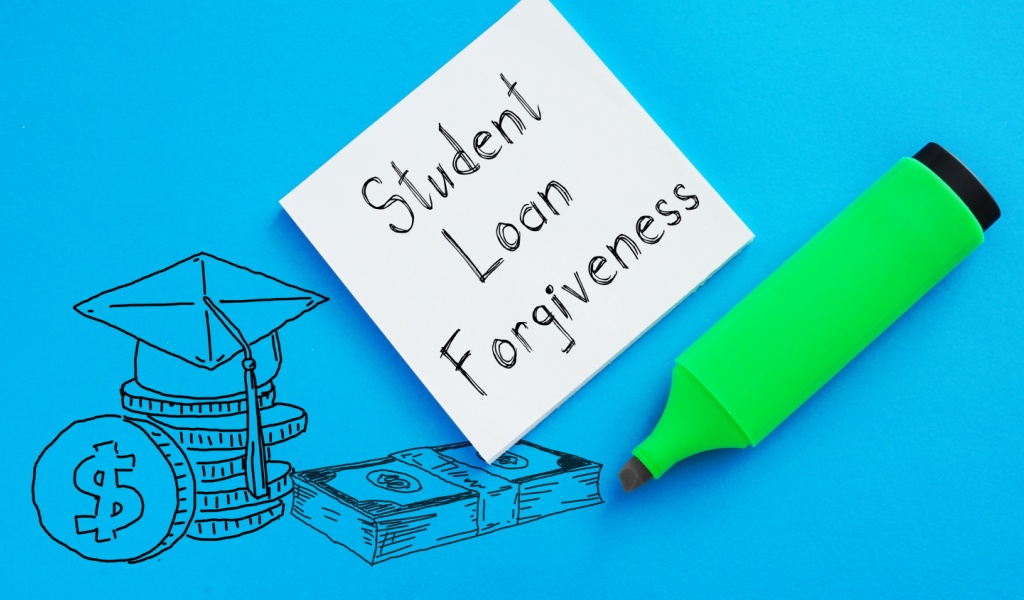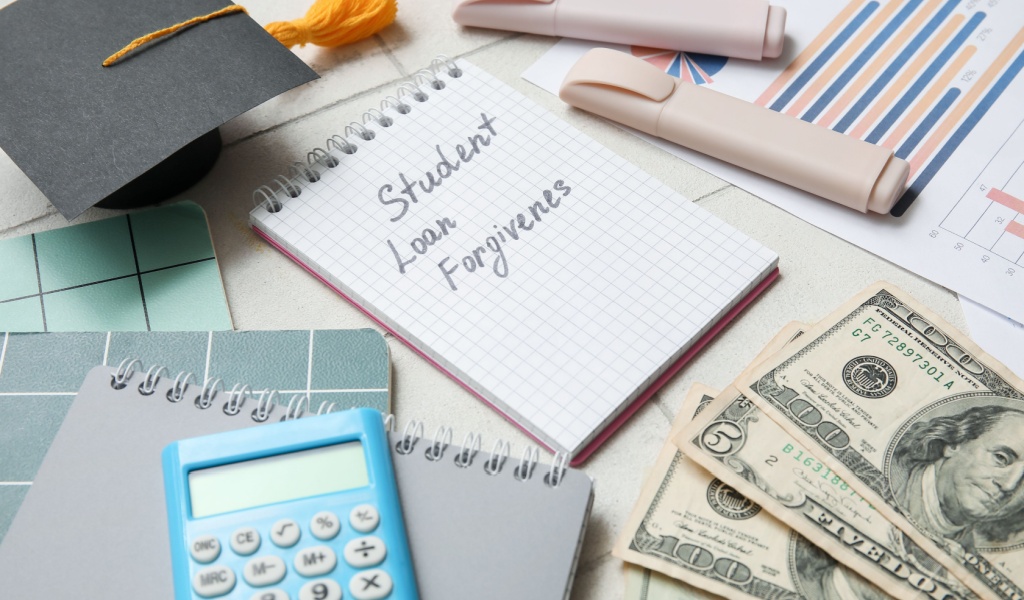As we know, student loans are an unavoidable downside of higher education. Although they support us in accomplishing our dreams, they also frequently leave us chained to debt long after graduation. Don’t worry if you find yourself in this mess, as there’s a ray of hope known as student loan forgiveness. Let’s learn about this life-changing method to dream big.

What Is Student Loan Forgiveness?
It’s a program or method that removes part of or all of your student loans under certain conditions. These conditions generally include fulfilling specific requirements, such as working in public services or teaching in neglected areas for a selected period.
Imagine your graduation day. You are tossing your cap in the air, clicking beautiful pictures, and celebrating your academic success. And suddenly, reality hits you – you’re burdened with a tremendous amount of student debt. This is where student loan forgiveness steps in as a guiding light of hope.
Types of Student Loan Forgiveness Programs
Learning about the requirements to qualify for student loan forgiveness programs is essential to gain benefits. The types of student loan forgiveness programs are as follows:
Public Service Loan Forgiveness (PSLF)
This program is a relief for those who work full-time in public service trades, such as government or nonprofit roles. After making 120 qualifying monthly payments while employed for a qualifying company, any outstanding balance on your federal direct loans might be forgiven. It is proof of rewarding those who devote their professions to serving their communities.
Income-Driven Repayment Forgiveness (IDR)
Under these plans, your monthly payments depend on your salary and family size. Any outstanding balance could be forgiven after 20 or 25 years of constant payments (depending on the plan). It’s like running a marathon where maintaining your pace guarantees a worthwhile finish. These plans are personalized for borrowers whose jobs may not align with old forgiveness programs.
Teacher Loan Forgiveness
If you have five years of continuous full-time employment as a teacher in low-income schools, you are suitable for forgiveness of up to $17,500 on your Direct Subsidized and Unsubsidized Loans and Subsidized and Unsubsidized Federal Stafford Loans. Such schemes acknowledge the serious role teachers play in shaping young minds, especially in challenging educational atmospheres.
Borrower Defense to Repayment
If your educational institute betrayed you or committed offenses that dishonored specific state laws, you might be suitable for loan forgiveness under the “borrower defense to repayment” facility.
This opportunity applies to any loan issued through the William D. Ford Direct Loan Program. Borrower defense relieves borrowers of their loan obligations if they can prove that they were misled or cheated by the institute they attend. This facility mainly targets private, for-profit schools known for engaging in doubtful practices.
Total and Permanent Disability Discharge
If you are totally and permanently disabled, you may be suitable for a release of your federal student loans, sheltering you during tough times. This facility guarantees that unexpected life events do not burden people who cannot work owing to severe health issues.
AmeriCorps
Members in an approved AmeriCorps program—AmeriCorps VISTA, AmeriCorps NCCC, or AmeriCorps State and National, are suitable to obtain the Segal AmeriCorps Education Award upon completing their term of state service. You can apply for a Segal AmeriCorps Education Award, which can be used to settle qualifying student loans once your service is acceptably complete. Similar terms can be applied to PSLF as well.
Military Service
Armed armed forces members with state student loans are qualified for added advantages from the US Department of Education and Defense. Aids consists of Department of Defense student loan repayment plans and interest rate limitations. Your military service can also be applied to PSLF.

The Pros and Cons of Student Loan Forgiveness Programs
Like any important policy initiative, student loan forgiveness programs have their fair share of critics and disagreements. Some people say that broader forgiveness programs could encourage careless loan borrowing and unnecessarily burden taxpayers. There are also arguments about the impartiality of forgiveness programs that favor some jobs over others, possibly making already-existing gaps even worse.
Nevertheless, supporters claim that these programs are essential for encouraging economic movement and reducing financial stress, mainly among those people following careers in public service or low-pay yet socially appreciated jobs. More pros and cons of this are as follows:
Pros
- Reduces heavy debt.
- Encourages public service.
- Increases disposable income and expenses.
Cons
- It takes years to be eligible.
- Might result in higher taxable income.
- Can speed the rate at which interest grows (IDR schemes).
Getting Around the Student Forgiveness Landscape
The world of student loan forgiveness is vast and complicated. These plans are created to ease the weight of student debt for those who qualify. Eligibility most often depends on features such as your job, the type of loan, and, occasionally, your loan settlement history.
The Ripple Impact
Student loan forgiveness is about removing debt and paving the way for a brighter and more prosperous future. It’s a game-changer for intellectual and emotional well-being, allowing you to focus on private and professional development rather than debt settlement.
Directing the Application Process of Forgiveness
Once you recognize a forgiveness program that suits your situation, the next move is to direct the application procedure. Prepare yourself for paperwork suitable for a fabulous adventure.
From confirming your employment history to showing your loan eligibility, every forgiveness program has its own requirements and document needs. Patience is essential during this period, as processing times can differ, and thorough attention to detail is essential to avoid delays or rejections.
The Future of Student Loan Forgiveness
As we look into the future of student loan forgiveness, hopefulness blends with doubts. Will there be more modifications to widen eligibility and shorten forgiveness procedures? Could student loans be seen more as an asset in human capital rather than a weight to be carried in the future? The continuing discussion about student loan forgiveness reflects broader discussions about higher education funding, economic justice, and the role of government in backing up borrowers.
Conclusion
In the outstanding tale of higher education and financial empowerment, student loan forgiveness is a ray of hope. It is proof of society’s appreciation of the sacrifices made in search of knowledge and service. Whether you are an ambitious educator, a loyal public servant, or just a borrower on the lookout for relief, there is a way to financial freedom if you direct the web of forgiveness opportunities with diligence and willpower.
So, keep hope! The ride from student loan burden to forgiveness is not just about finances but flexibility, commitment, and the potential of a happier, debt-free future for all who dare to dream and try. As we continue to direct the difficulties of student loans and forgiveness programs, let’s remember that each step forward brings us closer to a more complete and impartial education system.



